
One of the hardest things to face is the possibility of a much-loved cat dying. As pet parents, we have a responsibility to monitor the health and well-being of our cats and to take action if we observe pain or distress. Cat owners have the compassionate option to provide hospice care or euthanasia at the end of a cat’s life.
Monitoring cats for signs of deteriorating health can help pet owners know when to intervene. Physical signs that a cat is dying can include lethargy, weakness, incontinence, lack of appetite and weight loss, breathing difficulties, and a drop in body temperature. It can be helpful to watch for changes in behavior and habits, such as hiding, altered interactions with people, vocalizations, confusion, and poor hygiene.Key Takeaways
Being able to spot the common signs that your cat is at the end of their life can help ease the decision to help them cross over the rainbow bridge with dignity. These warning signs can include physical symptoms, such as lethargy, incontinence, and difficulty breathing, but also behavioral changes, such as confusion, poor hygiene habits, and hiding.
Also Read: Can Cats Sense Death?
Recognizing The Signs
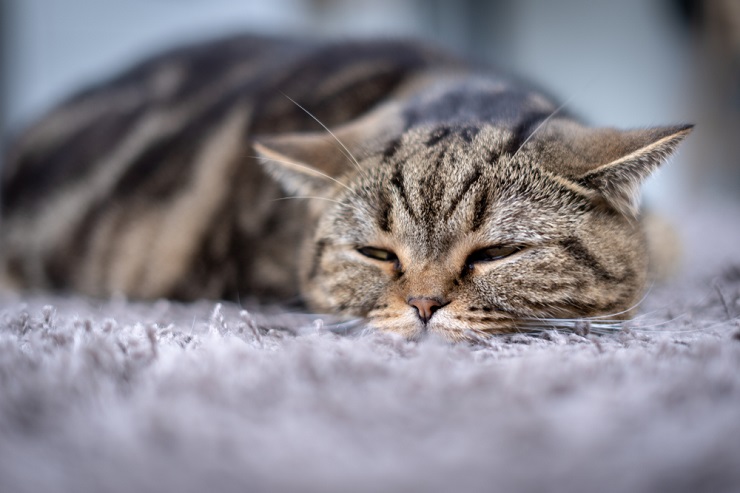
You might notice certain physical and behavioral signs as your cat is approaching the end of their life.
Although we all wish for our beloved pets to live forever, pet cats have an average lifespan of around 12 to 15 years. Senior cats might suffer from a terminal illness, or your cat’s body may just start to shut down due to old age.
Cats are all individuals, but there are some differences you might find in your pet’s final days that might aid the decision to ask your veterinarian for end-of-life care. Some of these are physical changes, but changes to a cat’s habits, interactions, and behaviors can be very noticeable to pet owners.
Also Read: How Old Is My Cat In Human Years?
Physical Signs That A Cat Might Be Dying
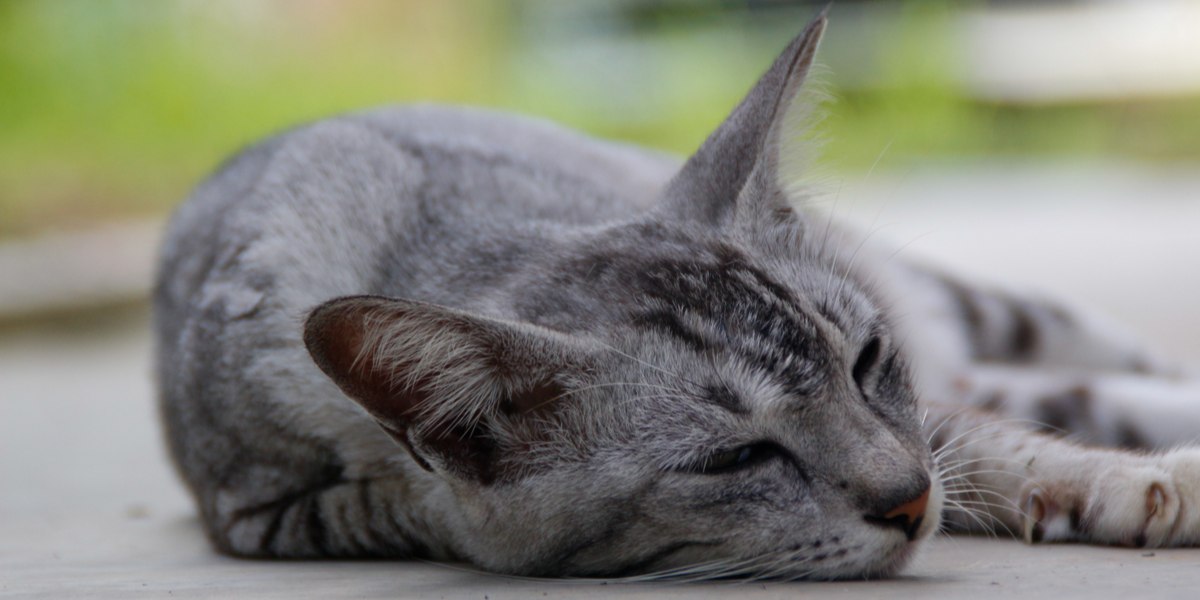
As they approach their final days, cats might stop eating and sleep a lot more than normal.
A healthy cat will usually be in fairly good physical condition, with a well-maintained coat, a good appetite, and the ability to perform normal amounts of exercise and hygienic toileting habits. If you’re concerned about your cat’s health, look out for these tell-tale signs that might indicate a dying cat.
1. Lethargy And Weakness
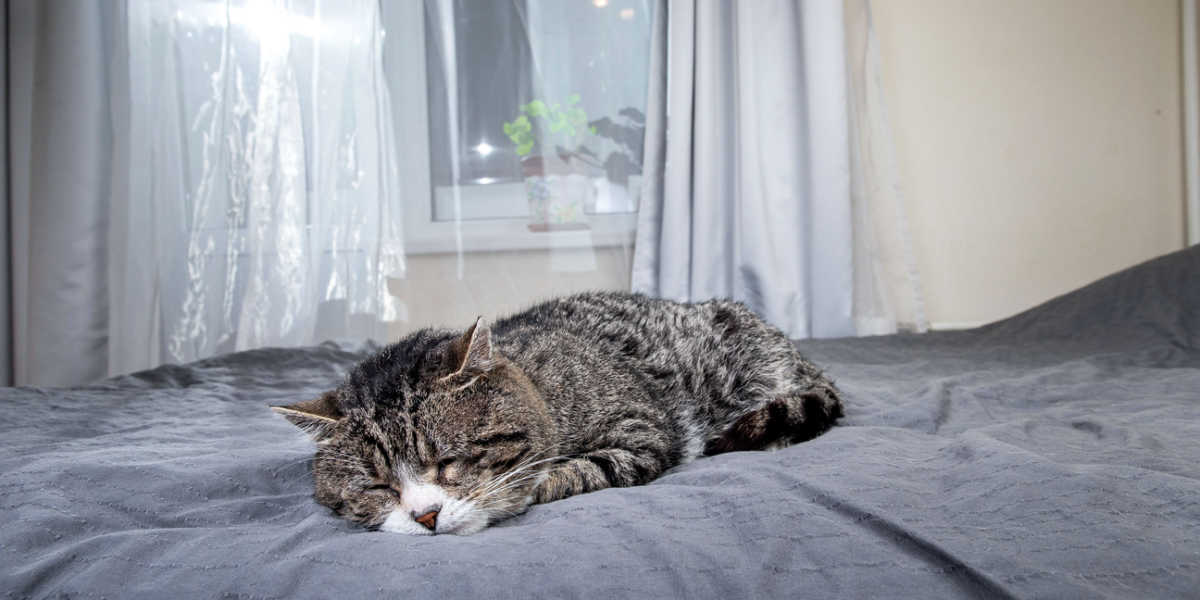
Cats sleep a lot in general, but if a cat is rarely awake, it could be a sign that the end is near.
A cat sleeping is not an unusual sight, and they can indeed snooze for around 16 to 20 hours a day! However, in the last days of life, your cat might show extreme weakness and lethargy. They might not rouse as usual for fuss and attention, and might even sleep through meals and toileting. You might note a lack of mobility, including struggling to rise, general weakness, lack of coordination, and dragging or knuckling of the hind legs.
Also Read: 6 Common Reasons Why Cats Pee Outside The Litter Box
2. Lack Of Appetite/Thirst
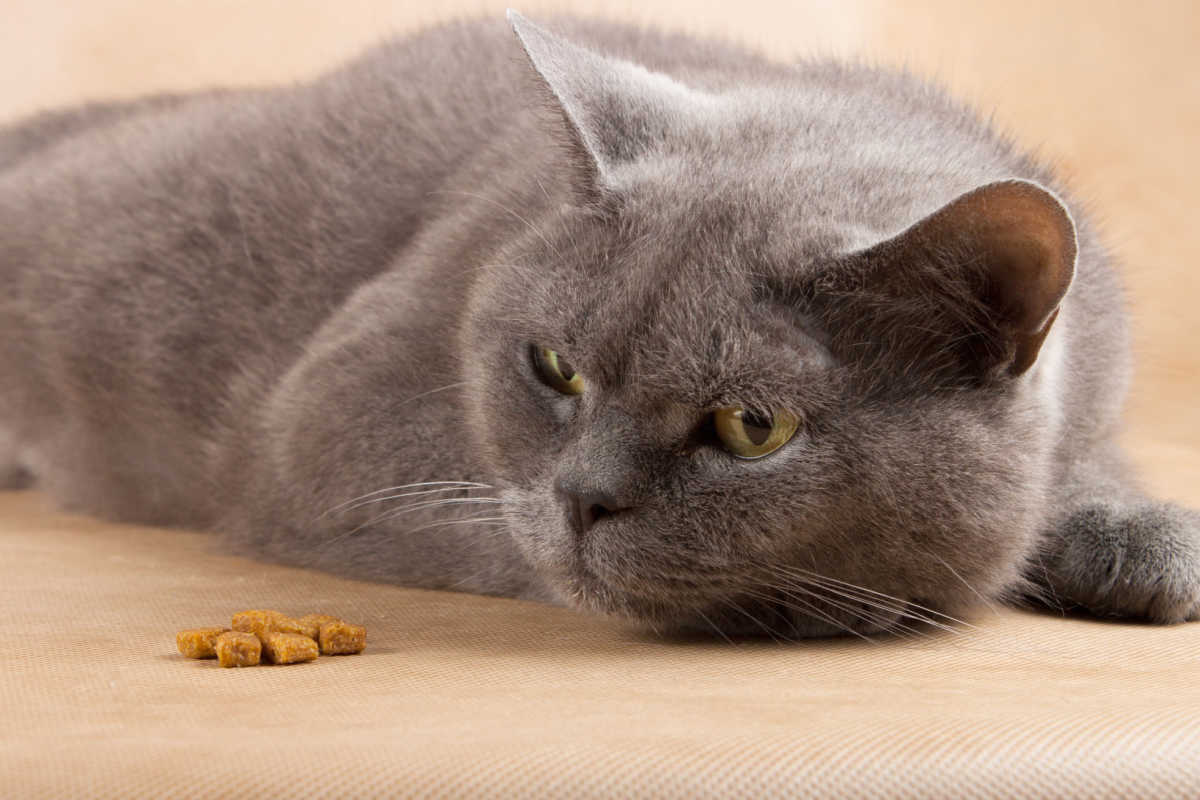
Refusing to eat or drink at all is a serious sign as cats cannot survive long without adequate hydration or nutrition.
A loss of appetite is common in cats that are ill and is often short-lived, but an ongoing inappetence and lack of thirst is a concern. Food refusal can lead quickly to weight loss, weakness, and is an indication of a poor quality of life. Cats cannot survive long without drinking water and will rapidly become dehydrated.
Also Read: What Can Cats Drink Besides Water?
3. Weight Loss

Very rapid weight loss, especially in a cat that has a terminal illness, is a sign that death might be imminent.
Rapid weight loss is a concern in any cat at any age. A sudden drop in condition, especially in older cats or those with chronic illness such as kidney disease, can indicate that the last days are approaching and that the body is shutting down.
Also Read: Why Is My Cat Thin At The Back End?
4. Incontinence
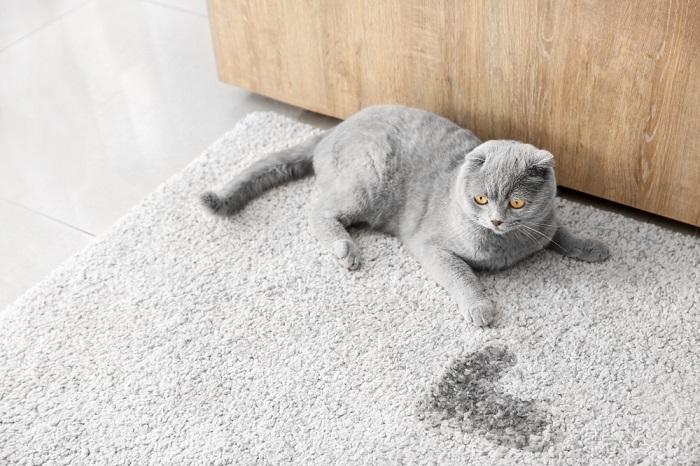
Cats that are near the end of life often have difficulty making it to the litter box, and they might not even recognize when they need to go.
A lack of bladder or bowel control in cats may be due to a treatable medical condition, but it can also be a sign that your cat is approaching the end of their life. Pain when eliminating waste, or any blood in the urine or feces, is also a concern.
Also Read: The 6 Best Cat Diapers
5. Body Temperature
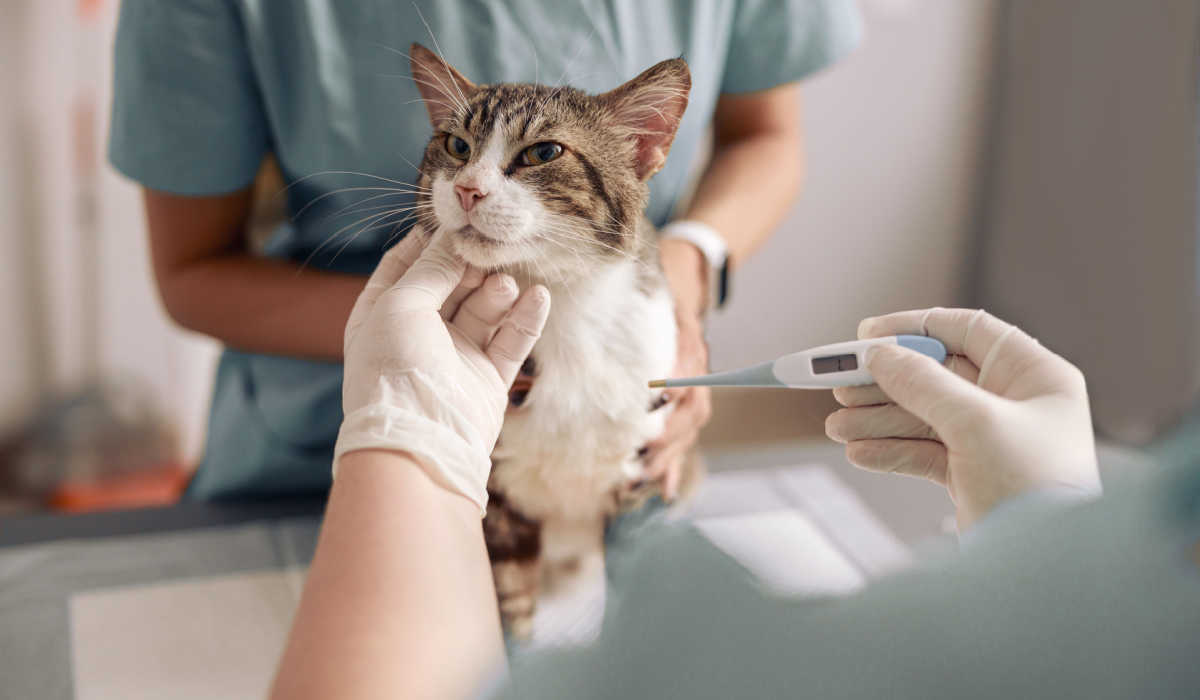
Dying cats often have very low temperatures as their bodies begin to shut down.
Cats usually have a fairly high resting body temperature, and will often seek out warm spaces. A drop in a cat’s temperature (below 100 Fahrenheit) is very concerning in cats, and can indicate extreme debilitation or serious illness.
Also Read: How Cold Is Too Cold For Cats?
6. Breathing And Heart Rate
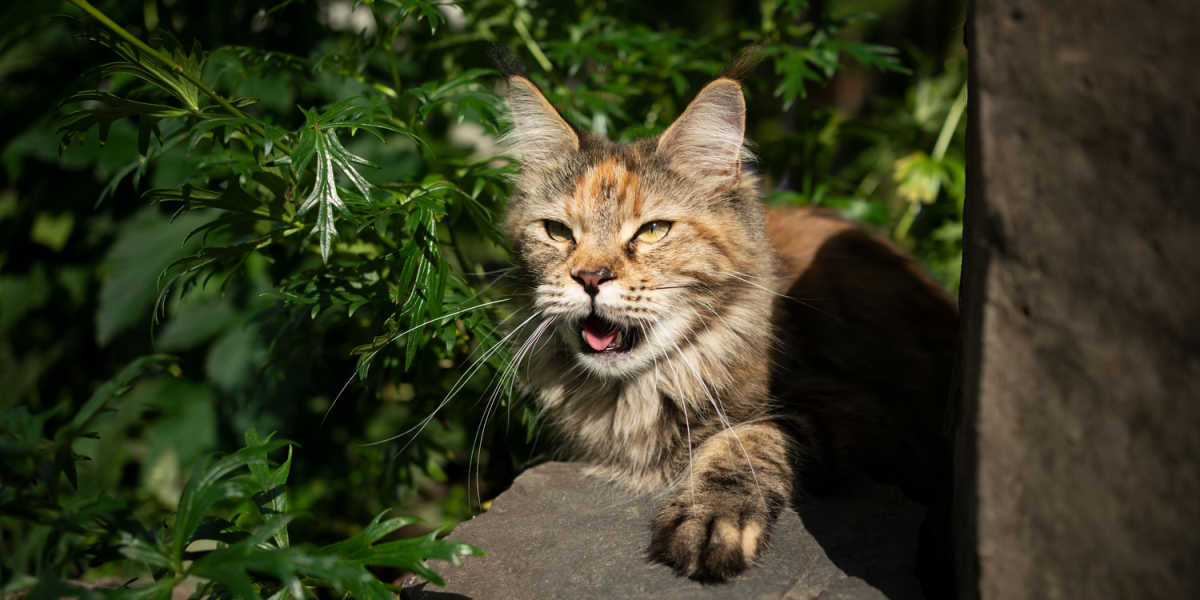
A cat that is panting or breathing with an open mouth is in respiratory distress.
A sick cat may have an abnormal heart rate or rhythm, and have difficulties breathing. A cat’s heart rate is usually around 160-200 beats per minute, and their breathing rate is around 20-30 breaths per minute.
It can be difficult to calculate your cat’s exact numbers, but if your cat is breathing heavily, with a lot of effort, or with their mouth open, these are signs that something is wrong.
If you notice any of these symptoms in your pet, you should seek advice from a DVM urgently.
Also Read: 11 Signs That You Need to Get Your Cat To the Emergency Room
Behavioral Signs That A Cat Might Be Dying
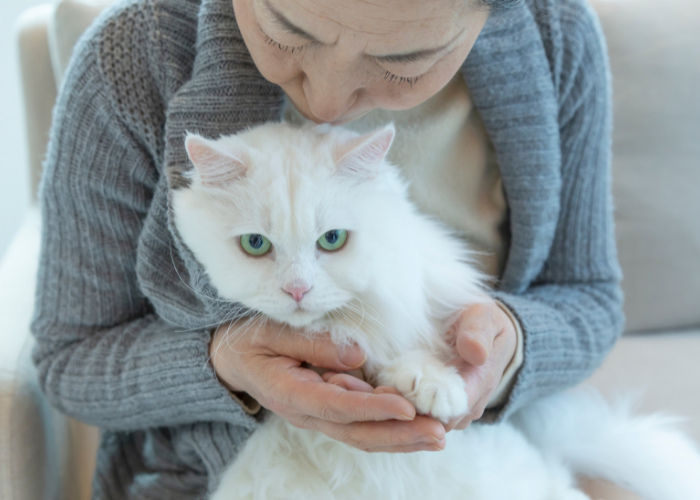
If you spot certain changes in your cat’s behavior and personality, it could mean the end is near.
Cats are good at hiding signs of illness and pain, and sometimes changes to a cat’s behavior, interactions and habits are easier to spot.
7. Hiding

Many animals, including cats, will hide away when they are dying.
Dying cats often secret themselves away somewhere safe and quiet, as an innate instinct to protect themselves from predators that would target a weak animal. If your cat is hiding all the time, it could mean the end is near.
Also Read: Why Is My Cat Hiding And Sleeping In The Closet?
8. Confusion
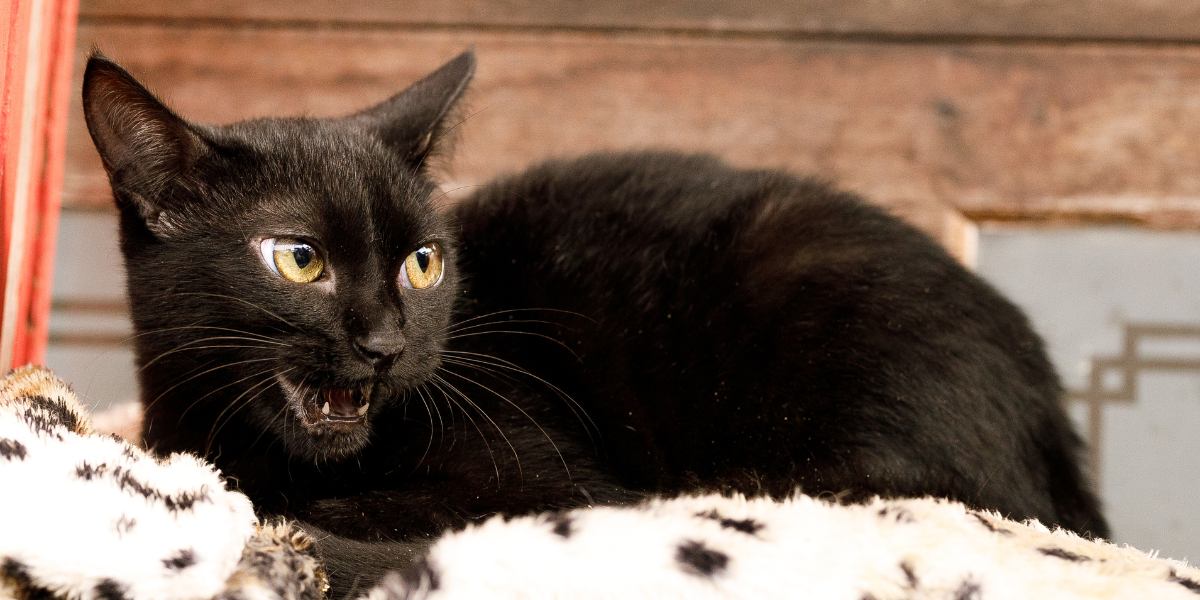
As death approaches, cats might seem confused or disoriented for no apparent reason.
At the end of life, some cats might become confused, dull, or disorientated. They might appear uncoordinated, weak or have a glazed look to their eyes.
Also Read: Why Is My Cat So Skittish All Of A Sudden? 8 Reasons!
9. Changes In Interactions
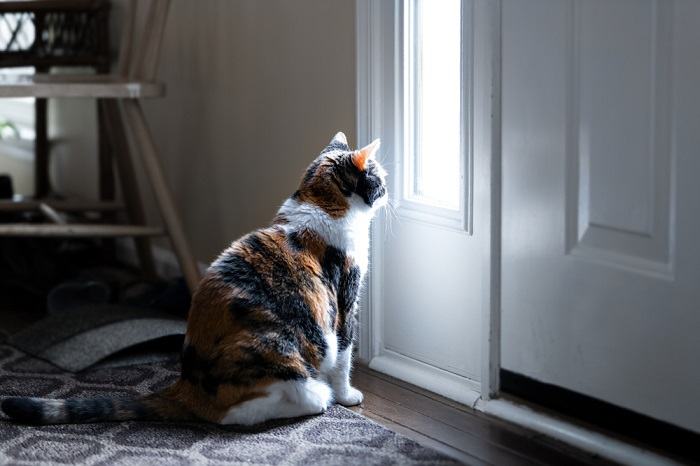
Formerly social cats might begin isolating themselevs as they near the end of their life.
Sick cats can change how they interact with you or a family member. A cat that is usually cuddly and loves a purring lap snuggle might suddenly shy away from physical contact. Other cats might become intensely clingy.
Also Read: How Much Attention Do Cats Need? A Vet Explains
10. Hygiene
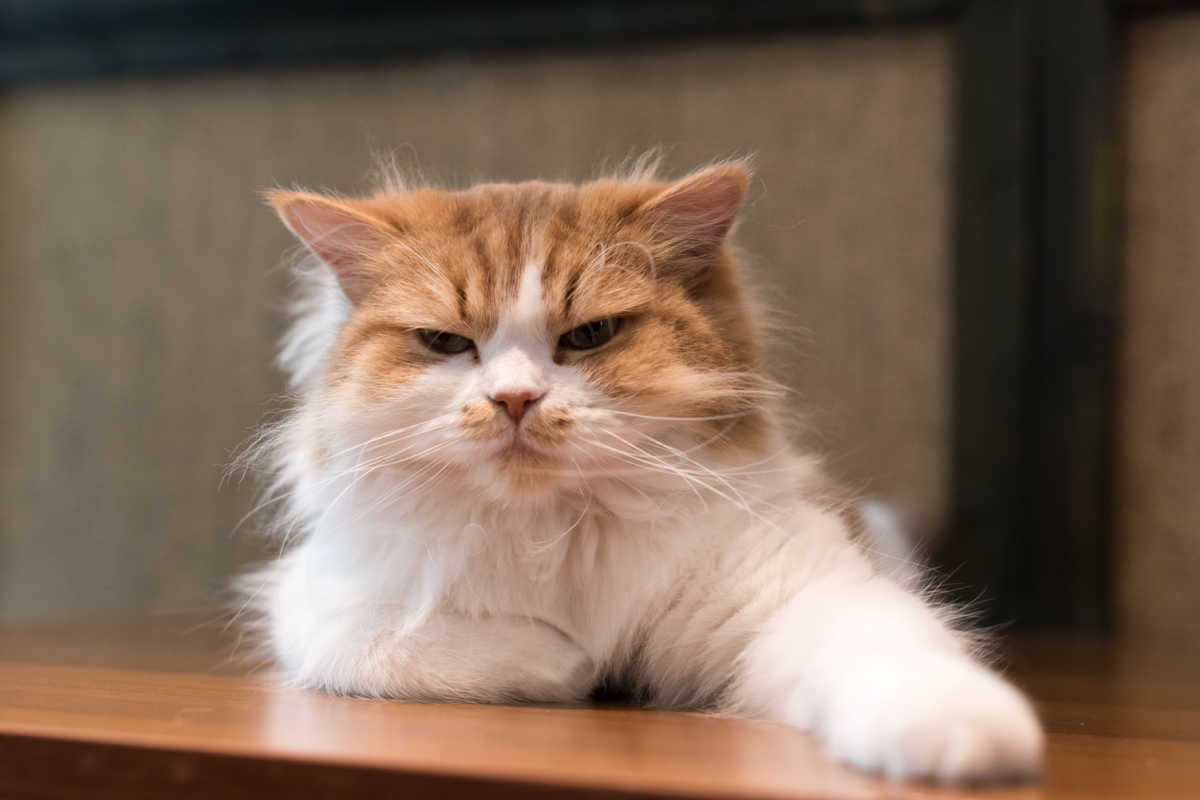
Healthy cats are fastidiously clean, but dying cats might lack the strength to keep up with coat grooming.
Often coupled with incontinence, cats toward the end of their life might struggle with their hygiene. This includes toileting outside the litter box, bad body odor, and poor grooming habits. Cats might appear unkempt, in poor condition, or just plain smelly.
Also Read: Cat Not Grooming: Why It Happens & How To Help
11. Vocalizations

Excessive meowing could indicate pain, discomfort, or confusion in a dying cat.
Occasionally, cats that are dying may become suddenly, loudly, and unexpectedly vocal. These sounds might include yowling, meowing, or whining and might be a sign of pain or distress.
Also Read: 7 Common Cat Vocalizations And What They Mean
What To Do If You Think Your Cat Is Dying
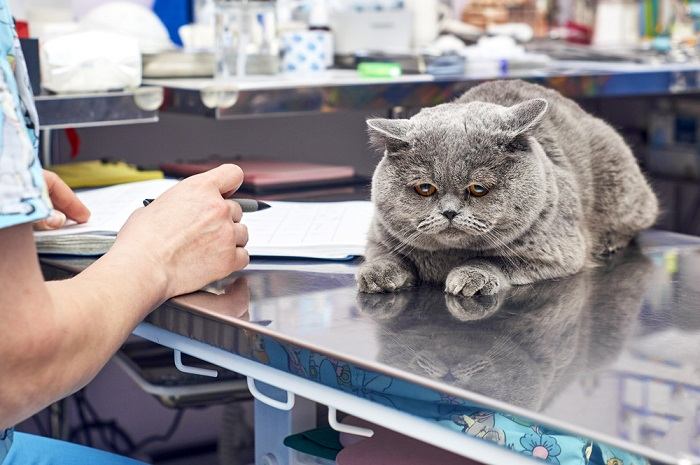
Your veterinarian can help find out if your cat’s symptoms can be treated or if your cat is nearing the end.
If you’ve read the above list and are worried about your cat, it’s important to remember that these individual signs don’t automatically mean your cat is extremely ill. They are all symptoms that something is amiss, but sometimes these problems are caused by health conditions that are resolvable or manageable with the wonders of modern veterinary medicine.
For example, changes to litter box habits and grooming can both be due to painful conditions such as arthritis and might improve with pain medication, after examination with a veterinarian.
However, these points are all cause for veterinary attention. If your cat is showing any of these signs, consult with your vet. Always ensure your cat receives medical attention if they are showing signs of illness, pain, or distress.
Also Read: How To Take Care Of A Kitten: The Complete Guide
When The End Comes
If your veterinarian has to break the sad news that your cat is very ill, this is a truly difficult time to navigate as a pet owner. It can be helpful to talk through your cat’s quality of life with a trusted friend or family member and to collaborate with your veterinarian as to what options are best for your pet next.
Hospice and palliative care might be options to relieve pain and buy you and your beloved pet some final time together. At some point, if your pet’s quality of life deteriorates or their pain becomes unmanageable, it might be time to consider euthanasia. It is a last great kindness to give your pet, to let them go before they can suffer, and help them to pass over the rainbow bridge with dignity and compassion.
Also Read: Do Cats Cry Tears When Sad Or In Pain?
If your cat is older or suffers from a terminal illness, you might be sadly aware that they won’t live forever. Watching for signs that your cat might be dying, including both physical and behavioral signs, can help pet owners to make difficult decisions regarding their end-of-life care.
Also Read: How Much Does It Cost To Cremate A Cat?
Frequently Asked Questions
What are the signs of a sick cat?
Sick cats might show physical symptoms such as vomiting or diarrhea, a lack of appetite or thirst, weight loss, weakness, and lethargy. They might also change their behavior, such as by hiding away, having poor hygiene, vocalizing more, or altering their interactions with you.
What to do when a cat is at the end of their life?
If your cat is showing signs of illness, pain, or distress, seek veterinary attention urgently. Cats that are terminally ill should be provided with a safe, warm, comfortable, and quiet resting place, tempting food, and easy access to resources such as a litter tray.
How do you know when it’s time to put your elderly cat down?
If your cat is no longer enjoying the things they used to do, is very lethargic or hiding away, has no appetite, or has simply lost their spark for life, they might need veterinary attention and end-of-life care.








i appreciate knowing what to look for as the 11 signs my cat is nearing the end of their life. i don’t want my pet to suffer. God bless you. the Bible says the L:ord will wipe away every tear.
your information has been very helpful – the 11 warning sign of nearing end of life.. with a pet its important to realize its for a period of time.. our cat is 15 going on 16.. im surprised she is 102 in human years. and has been in good health til recently.. I appreciate getting a vet.s opinion.. Pets will win your heart and take it with them.. i treasure the love that has been shared. the hardest and kindness act is to let them go before suffering. thank you for the opportunity to express my sadness.. this will be the first time in 50 years to have a home without a cat. Susie has spent 20 % of my life with me. your prayers are appreciated.